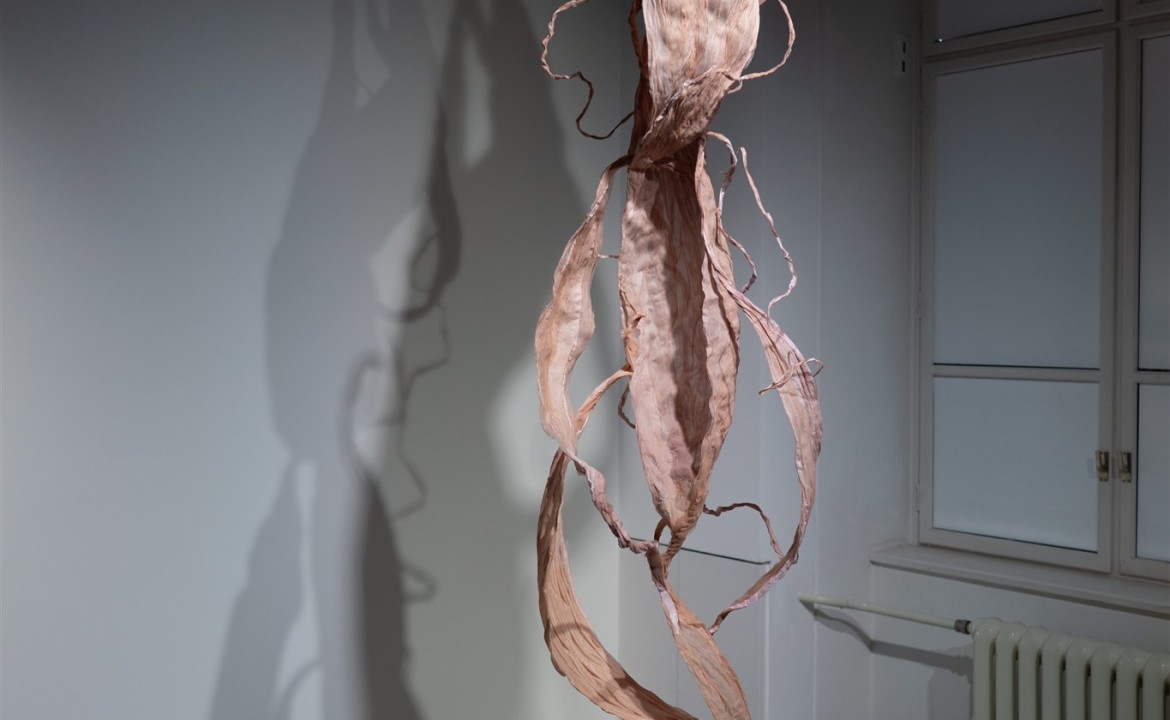Textiles surround us everywhere. They cover our windows, pillows and seats. They act as concealers, skins that cover living
and inanimate bodies. Our skin’s first contact with the external world is in most cases created from fabrics. Clothing protects
us from the elements and acts as a means of communication. It represents shared values and symbols in the social order.
In our bedrooms, sheets of an unmade bed witness the absence of a body while still retaining a memory of form. Textiles take the shape of the hidden subject, letting the light shine only on the contours of the unseen. In Fabricacy, fabrics take a shape of their own. Fabric becomes skin without holding a body. It stands as a hollow, see-through entity that has nothing to hide, nor should be hidden.
In our bedrooms, sheets of an unmade bed witness the absence of a body while still retaining a memory of form. Textiles take the shape of the hidden subject, letting the light shine only on the contours of the unseen. In Fabricacy, fabrics take a shape of their own. Fabric becomes skin without holding a body. It stands as a hollow, see-through entity that has nothing to hide, nor should be hidden.
Fact Box
Fabricacy
Categories
Date
June 07, 2024
-
Students
- Rebeka Csombordi (PR team, exhibiting artist)
-
Alumni
- Rebeka Csombordi (PR team, exhibiting artist)
Pariticipants

